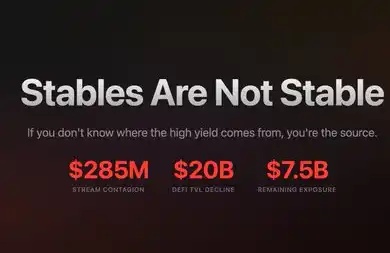Stock Price Drops Over 80% - How Long Can Ethereum's Final Buyer, BitMine, Hold Out?
Original Article Title: "After an 80% Price Drop, Is BitMine Misaligned in Value?"
Original Article Author: Zhou, ChainCatcher
The crypto market continues to slump, with the price of Ethereum dropping nearly 40% from its peak since November, and ETFs experiencing continuous outflows. In this round of systemic downturn, the largest Ethereum treasury company, BitMine, has become a focal point. Peter Thiel's Founders Fund has reduced its BMNR holdings by half, while Cathie Wood's ARK Invest and JPMorgan have chosen to increase their positions against the trend.
The capital's conflicting attitudes have put BitMine's "5% Alchemy" under scrutiny: 3.56 million ETH, $3 billion unrealized losses, mNAV dropping to 0.8. As one of the last bastions of Ethereum's buying pressure, how long can BitMine continue to buy? Is there a misalignment in value? After the DAT flywheel has stalled, who will take over ETH?
1. BitMine's 5% Alchemy, How Long Can the Funds Hold Up?
BitMine, as the second-largest cryptocurrency treasury company after MicroStrategy, had planned to buy tokens equivalent to 5% of Ethereum's total supply in the future. On November 17, BitMine announced that its Ethereum holdings had reached 3.56 million coins, accounting for nearly 3% of the circulating supply, surpassing half of the long-term goal of 6 million coins. In addition, the company currently holds approximately $11.8 billion in crypto assets and cash, including 192 bitcoins, $6.07 billion in unleveraged cash, and 13.7 million shares of Eightco Holdings.
Since launching a large-scale coin hoarding plan in July, BitMine has been the focus of the market. During that time, the company's stock price surged in sync with the price of Ethereum, and the "buying pressure market cap" story was seen by investors as a new paradigm in the crypto space.
However, as the market turned cold and liquidity tightened, market sentiment began to reverse. The drop in Ethereum's price made BitMine's aggressive buying pace appear more risky. Based on an average purchase price of $4009, BitMine's unrealized losses have approached $3 billion. Although Chairman of the Board Tom Lee has publicly expressed bullish views on Ethereum and stated that the company will continue to accumulate at low levels, investors' focus has shifted from "how much more can they buy" to "how long can they hold out".
The current cash reserve of BitMine is approximately $6.07 billion, with the company's funds mainly coming from two channels.
First is cryptocurrency asset revenue. BitMine relies on immersion-cooled Bitcoin mining and consulting services to generate short-term cash flow, while also staking Ethereum to pursue long-term returns. The company has stated that its ETH holdings will be staked, generating approximately $400 million in net income.
Second is secondary market financing. The company has initiated an ATM stock sales plan, which allows it to sell new shares for cash at any time without a preset price or scale. To date, the company has issued billions of dollars in stock and attracted institutional funds, including prominent institutions such as ARK, JPMorgan Chase, and Fidelity. Tom Lee stated: when institutions buy BMNR in large quantities, these funds will be used to purchase ETH.
Through the dual-drive of accumulating ETH and generating income, BitMine is attempting to reshape the logic of corporate capital allocation, but changes in the market environment are undermining the stability of this model.
In terms of stock price, BitMine (BMNR) is under certain pressure, with its price retracing approximately 80% from its July high, currently valued at around $9.2 billion, below its ETH holding value of $10.6 billion (at an ETH price of $3000), and mNAV dropping to 0.86. This discount reflects the market's concerns about the company's unrealized losses and fund sustainability.

II. ETH Price: The Last Straw - Three Visible Buying Power Divergence, Staking Exodus
From a macro perspective, the Fed has signaled a hawkish stance, reducing the probability of a rate cut in December, leading to overall weakness in the crypto market and a significant decline in risk appetite.
Currently, ETH is testing $3000, down over 30% from its August high of $4900. This round of correction has refocused the market on a key question: if the strength supporting the price previously came from treasury companies and institutional holdings, who will step in as buying interest wanes?
Among visible market forces, the three major buying sides - ETFs, treasury companies, and on-chain funds - are showing divergence in different directions.
First, the inflow trend of Ethereum-related ETFs has significantly slowed down. The total holdings of Ethereum ETFs are currently about 6.3586 million ETH, accounting for 5.25% of the total supply. According to SoSoValue data, as of mid-November, the total net assets of Ethereum spot ETFs are approximately $18.76 billion, with significant outflows exceeding inflows this month, with daily outflows as high as $180 million. Compared to the continuous net inflows from July to August, the fund curve has transitioned from a steady rise to a volatile decline.

This slide not only weakened the potential buying power, but also reflected that market confidence has not fully recovered from the pace of the crash. ETF investors usually represent medium- to long-term allocation funds, and their exodus implies a slowdown in incremental demand for Ethereum through traditional financial channels. When ETFs no longer provide upward momentum, they may instead amplify volatility in the short term.
Secondly, Digital Asset Treasury (DAT) companies have also entered a divergent stage. Currently, the total Ethereum strategic reserve of treasury companies is 6.2393 million ETH, accounting for 5.15% of the supply. The pace of accumulation has significantly slowed down in recent months, with BitMine almost becoming the sole major buyer still making large-scale purchases. In the past week, BitMine once again acquired 67,021 ETH, continuing to implement a strategy of buying the dip; after purchasing 19,300 ETH on October 18, SharpLink has not made any further purchases and is currently at a loss as its average cost is around $3,609.
In contrast, some small and medium-sized treasury companies are being forced to shrink, with ETHZilla selling about 40,000 ETH at the end of October to buy back shares, attempting to narrow the discount range and stabilize the stock price through selling some ETH.
This divergence indicates that the treasury industry is transitioning from general expansion to structural adjustment. Top companies can still maintain their buying with funds and confidence, while small and medium-sized companies are facing liquidity constraints and debt pressure. The market's baton is shifting from widespread incremental buying pressure to a few "lone warriors" who still have a capital advantage.
On the on-chain level, short-term fund dominators are still whales and high-frequency addresses, but they do not constitute a force supporting the price. Recently, the big brother who has been persistently bullish on ETH has been liquidated consecutively, to some extent denting trading confidence. According to Coinglass data, ETH's total open interest in contracts has almost halved since the peak in August, leverage funds are rapidly shrinking, indicating that liquidity and speculative fervor are cooling simultaneously.
Furthermore, Ethereum ICO wallet addresses that have been dormant for over 10 years have been activated and started moving funds. Glassnode data reports that long-term holders (addresses holding for 155 days or more) are currently selling about 45,000 ETH daily, equivalent to about $140 million. This is the highest sell-off level since 2021, indicating a weakening of the current bullish momentum.

BitMEX Co-founder Arthur Hayes recently stated that despite the contraction of USD liquidity from April 9 until now, ETF inflows and Direct Access Tokens (DAT) purchases have allowed Bitcoin to rise. However, this situation has now ended. The basis is not thick enough to sustain institutional investor buying of ETFs, and most DATs are trading at a discount below mNAV, causing investors to now shun these derivative securities.
Ethereum is facing a similar situation, especially as its staking ecosystem is showing signs of ebbing. Beaconchain data reveals that Ethereum's daily active validator count has dropped by around 10% since July, reaching the lowest level since April 2024. This is the first time such a significant decline has occurred since the network transitioned from a Proof of Work (PoW) to a Proof of Stake (PoS) consensus mechanism in September 2022.
The main reasons for the decline in  are twofold:
are twofold:
First, this year's Ethereum bull market led to an unprecedented spike in validator queue exits, with staking operators rushing to unstake to realize profits.
Second, the staking yield has decreased and borrowing costs have risen, making leveraged staking unprofitable. The current annualized staking yield for Ethereum is approximately 2.9% APR, far below the historical high of 8.6% set in May 2023.

In the context of three main buying pressure paths facing simultaneous pressure and the staking ecosystem receding, Ethereum's next phase of price support faces a structural test. While BitMine is still buying, it is almost fighting alone. If even BitMine, this last pillar, cannot continue buying, the market will lose not just a stock or a wave of funds, but possibly the entire foundation of the Ethereum narrative.
Three, Is There a Value Misalignment for BitMine?
After discussing the funding chain and the retreat of buying pressure, a more fundamental question arises: Has the story of BitMine really ended? The pricing that the market is currently giving clearly does not fully understand its structural differences.
Compared to MicroStrategy's path, BitMine chose a completely different approach from the beginning. While MicroStrategy heavily relies on convertible bonds and preferred stock for fundraising in the secondary market, bearing an annual interest burden of billions of dollars, its profitability depends on Bitcoin's unilateral rise. Although BitMine diluted its equity through new stock issuance, it has almost no interest-bearing debt. Additionally, its ETH holdings contribute approximately $4-5 billion in staking rewards annually, a cash flow that is relatively rigid and has a much lower correlation with price fluctuations compared to the debt costs of MicroStrategy's Strategy.
More importantly, this profit is not the end. As one of the world's largest institutional ETH holders, BitMine can fully utilize the staked ETH for restaking (earning an additional 1-2%), operating node infrastructure, locking in fixed income through yield tokenization (such as around 3.5% deterministic income), or even issuing institutional-grade ETH structured notes, all of which are operations that MicroStrategy's BTC holdings cannot achieve.
However, currently BitMine's (BMNR) US stock market value is discounted by approximately 13% compared to its ETH holding value. Within the entire DAT sector, this discount is not the most exaggerated, but it is significantly below the market's historical pricing center for similar assets. The bearish market sentiment has amplified the visual impact of the unrealized loss, to some extent masking the value of the buffered returns and ecosystem options.
Institutional recent actions also seem to have captured this deviation. On November 6, ARK Invest increased its holdings by 215,000 shares ($8.06 million); JPMorgan Chase held 1.97 million shares at the end of the third quarter. This is not blind bottom fishing but rather based on a judgment of the long-term compound growth of the ETH ecosystem. Once the Ethereum price stabilizes or moderately rebounds, the relative stability of returns may lead BitMine's mNAV repair path to be steeper than a purely leveraged treasury.
Whether value mismatch truly exists, the answer is already on the table, and the remaining question is when the market will be willing to pay for scarcity. The current discount is both a risk and the starting point of divergence. As Tom Lee has said, the labor pain is short-term and will not alter the supercycle of ETH. Of course, it may also not alter BitMine's core role in this cycle.
Welcome to join the official BlockBeats community:
Telegram Subscription Group: https://t.me/theblockbeats
Telegram Discussion Group: https://t.me/BlockBeats_App
Official Twitter Account: https://twitter.com/BlockBeatsAsia


 Forum
Forum Finance
Finance
 Specials
Specials
 On-chain Eco
On-chain Eco
 Entry
Entry
 Podcasts
Podcasts
 Activities
Activities










 0
0